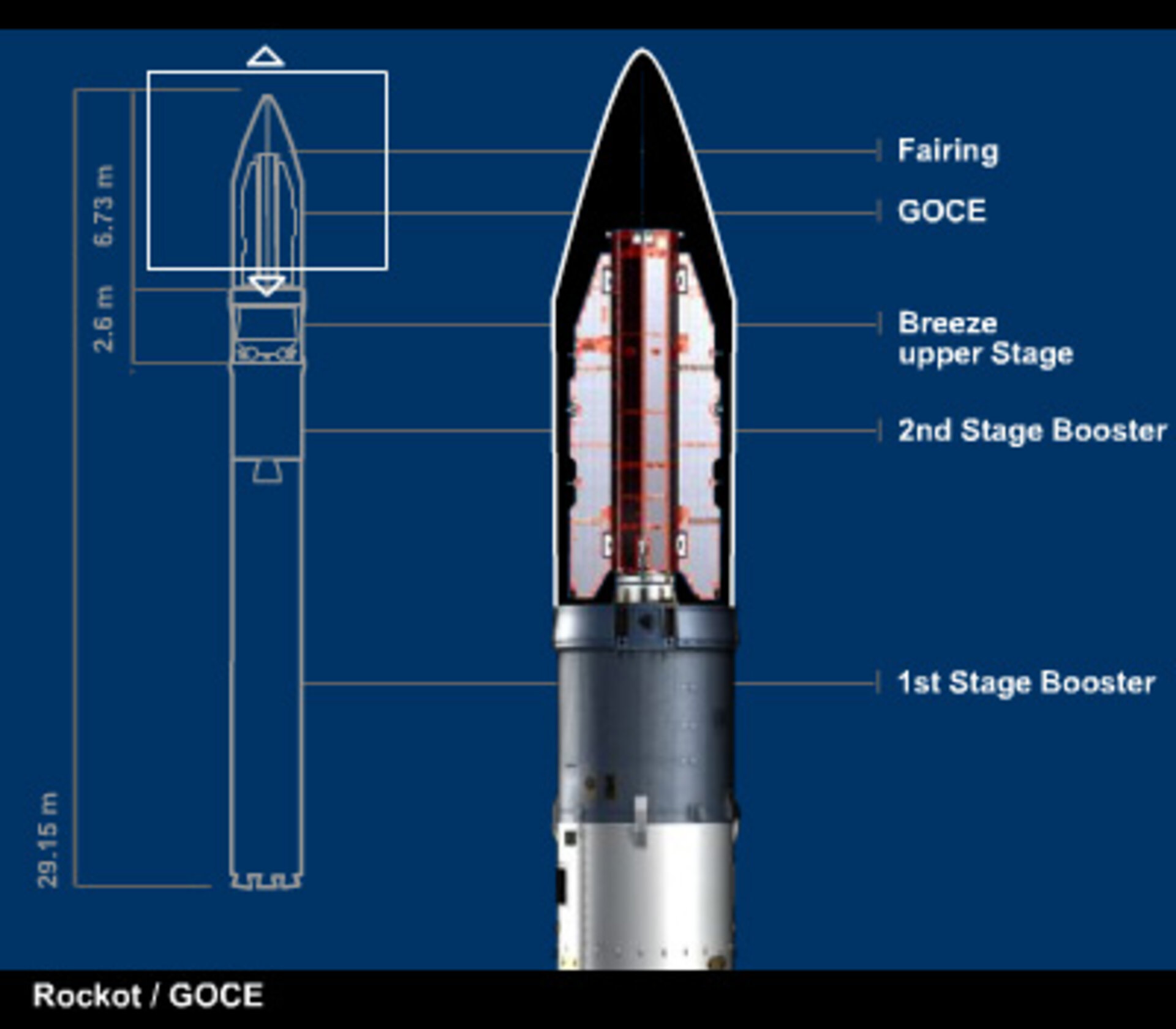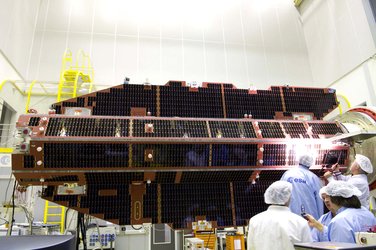Launcher
GOCE was launched by a Russian Rockot vehicle – a converted SS-19 Russian Intercontinental Ballistic Missile (ICBM) – from the Plesetsk Cosmodrome in northern Russia.
The adaptation of the SS-19, which was designed as a weapon of war during the early 1970s, uses the original two lower liquid propellant stages of the ICBM in conjunction with a third stage for commercial payloads called Breeze KM – optimised for delivering up to 1950 kg into low Earth orbit.
Around 150 of the SS-19 missiles were declared as excess in military terms by the Strategic Talks on Arms Reduction Treaty (START) agreements signed by the United States and the Soviet Union in 1990 and 1991, but were permitted to be reused as civil launchers.
The SS-19 ICBM has flown over 140 times, with three failures, early on in its operational history. Rockot successfully began commercial launches in 2000 and has since flown eight times, seven of which were flawless.

The October 2005 launch of ESA's CryoSat failed when the control system in the Breeze upper stage did not execute the command to shut down the second stage’s engine. After the CryoSat failure, all Rockot launches were suspended until the cause was identified.
Corrective measures for Rockot's return-to-flight were implemented for the South Korean Kompsat-2 Earth observation satellite launch, which was successful on 28 July 2006.
The overall launch vehicle length is 29 m; the launch mass is 107 t. The external diameter of the first, second and third stage is 2.5 m; the payload fairing has an external diameter of 2.6 m and a height of 6.7 m.
Rockot is marketed and operated by Eurockot, a German-Russian joint venture.







